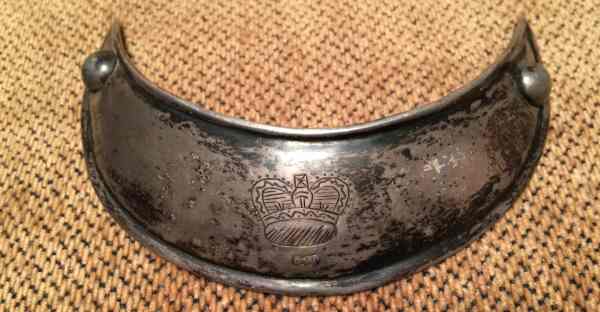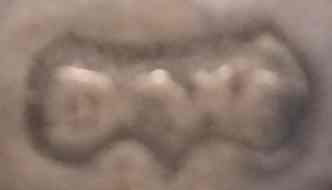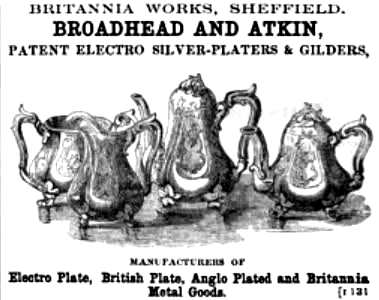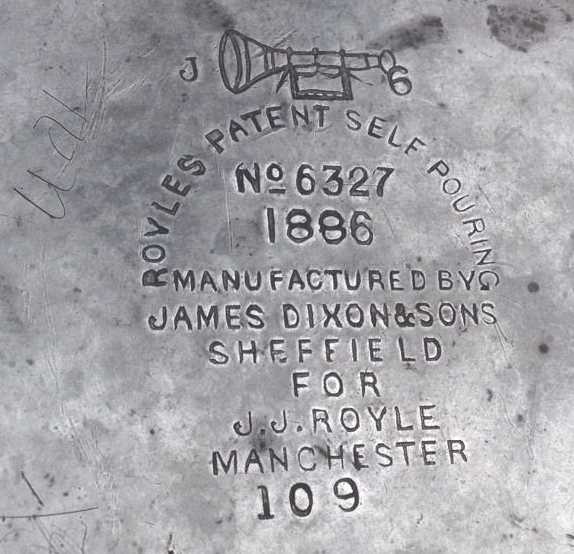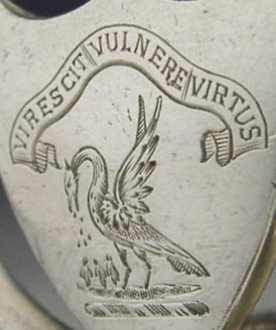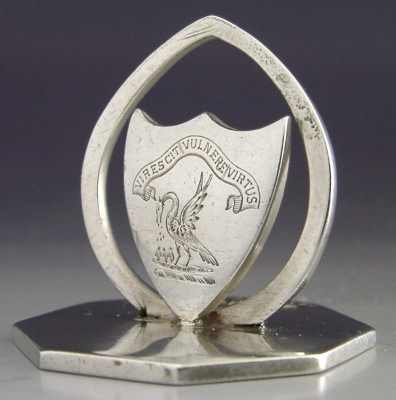 newsletter
# 148 September 2016
newsletter
# 148 September 2016www.ASCASonline.org SITE MAP
email: silverassociation@yahoo.it
YOUR GUIDE TO SEPTEMBER NEWSLETTER: articlesnew members members' windowmail to ASCAS replies to questions a page per month a silversmith per month a word per month a book on my shelf a crest per month contributors to this Newsletter search engine disclaimer and privacy policy A new article for ASCAS website
Maurice Meslans presents:
|
top page - page map |
Mail to ASCAS: e-mail
silverassociation@yahoo.itRobin Gibson writes:
... I write with a request for help to identify the stamp on a set of fruit knives and forks.
The cutlery is small and the mark very tiny. It has BMF 'bear' image and below looks like 66 or GG
Are you able to advise me?
Robin Gibson
Trevor Cofer writes:
... I had a question regarding a hallmark I was unsure of. It looks like a "DW" to me, but isn't in a rectangle. It is in almost a batman outline. I have attached a picture of it. I noticed you had a David Willaume hallmark picture and was wondering if you could help me identify this hallmark.
It's is a trade silver gorget recovered from a Creek Indian site in Alabama. Because of the crown, I was wondering if it was a piece gifted to the Indians by the British, for any one of a variety of reasons.
I have seen several without makers marks, some with just the initials, but very few with any additional markings.
I really appreciate your help,
Trevor Cofer
The shape doesn't correspond to the mark of David Willaume II. The mark of Dennis Wilks (Grimwade 519) bears some resemblance but, in my opinion, the gorget was made by an unidentified Colonial silversmith.
It doesn't seem cost-effective to import from England an object of simple manufacture which can easily be done by a local silversmith
Giorgio Busetto
Geldolph Everts writes:
... I again need to call on the expertise of the association's members.
I inherited an antique purse with silver handle and clip mechanism.
I have no idea about the origin of the purse and although I have passed quite some time looking through your pages, I have not managed to identify the stamps.
Thanks and best regards.
Geldolph Everts
I believe the metal isn't silver. Could be alpacca, pewter or another silvered metal.
Giorgio Busetto
Luigi Masciullo writes:
... I'd wish to identify the mark of this sugar bowl, presumably Italian, 19th century
Any suggestion will be welcome
Luigi Masciullo
Shelly Cox writes:
... I was wondering if you would be able to help me with the origins of this teapot.
I am hitting some blanks as I haven't seen any with the letter B at the end.
Are you able to assist?
I would be really grateful if you could point me in the right direction.
Shelly Cox
The maker is John Sherwood & Son, see my website at http://www.silvercollection.it/electroplatesilverS.html
Symbols and letter next the shield with initials are added to imitate the series of marks of sterling silver (see my website at http://www.silvercollection.it/dictionarysilverplatepseudohallmarks.html
In some cases the B is used as a Quality symbol (third quality), see my website at http://www.silvercollection.it/dictionarysilverplatesymbols.html
Giorgio Busetto
Replies to questions
Allen Carlson
receives this answer about his Jensen Sterling pin
(see August 2016 Newsletter)
Ole Lachmann
I asked the most knowledgeable Danish Georg Jensen expert about the strange mix of old and modern Georg Jensen marks shown by Allen Carlson on a brooch in your last newsletter.
In cooperation with the GJ company, he has just arranged a huge Georg Jensen exhibition at Sophienholm Museum, celebrating GJ's 150 years birthday. .
He said that such mix of marks in not unusual on small pieces. Having all the company's marks at hand they would apparently sometimes just grab the nearest GJ mark. .
The piece has all the information needed if designed by GJ himself. According to the specialist is probably made in the 1920s.
Ole Lachmann
"A PAGE per MONTH"
In this column we presents a page obtained from makers'
brochures, books, auction catalogs, advertising or whatever
other printed paper, related to silver, that may be of interest
for ASCAS members.
The images will be published at a "low resolution" level and for
private and personal use only.
This column is published under the kind permission of Giorgio
Busetto's website
"A WORD per MONTH"
In this column we present an abstract from a page of the "What is? Silver Dictionary"courtesy of
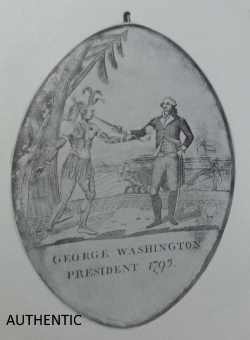
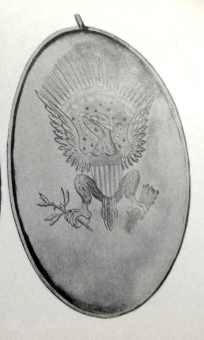 |
INDIAN PEACE MEDALS AND PRESENTATION SILVER
In the 1730s is documented the manufacture of silver breast plates by Albany silversmith Koenraet Ten Eyck while a silver gorget made in 1755 by his son Barent Ten Eyck was found in an Indian grave at Franklin, North Carolina. Various gorgets were made by Joseph Richardson of Philadelphia. Richardson made a variety of silver objects as earrings, crosses, hair plates, medals for a Quaker organization named "The Friendly Association of Regaining and Preserving Peace with the Indians by Pacific Measures"...... MORE... |
"A SILVERSMITH per MONTH"
In this column
we present marks, information and history of silversmiths and
silver manufacturers.
This column is published under the kind permission of Giorgio
Busetto's website

|
JAMES DIXON AN ATTEMPT TO DATE BRITANNIA METAL (PEWTER) TRADE MARKS From centuries British silver is protected by the stamping of symbols and letters identifying the maker, the Assay Office and the date in which the quality of the silver piece was verified.
Thanks to the "date letter" any piece of British sterling silver can be exactly dated.
|
"A CREST per MONTH"
In this column we
present images and descriptions of Crests and Mottoes of British,
Irish and Scottish families as engraved on silver items.
This column is published under the kind permission of Giorgio
Busetto's website

FAMILY CRESTS: LIST OF NAMES
ILLUSTRATED DIRECTORY OF FAMILY CRESTS
Closing our September 2016 edition of ASCAS Newsletter I hope
you have appreciated its content.
Your comments, suggestions and advice will be of great help.
My thanks to Trevor Cofer, Shelly Cox, Geldolph Everts, Robin Gibson, Ole Lachmann, Luigi Masciullo and Maurice Meslans for their precious contributions.
Giorgio Busetto
Secretary
DISCLAIMER AND PRIVACY POLICYASCAS is a community of people having a common
interest in antique silver.
|



